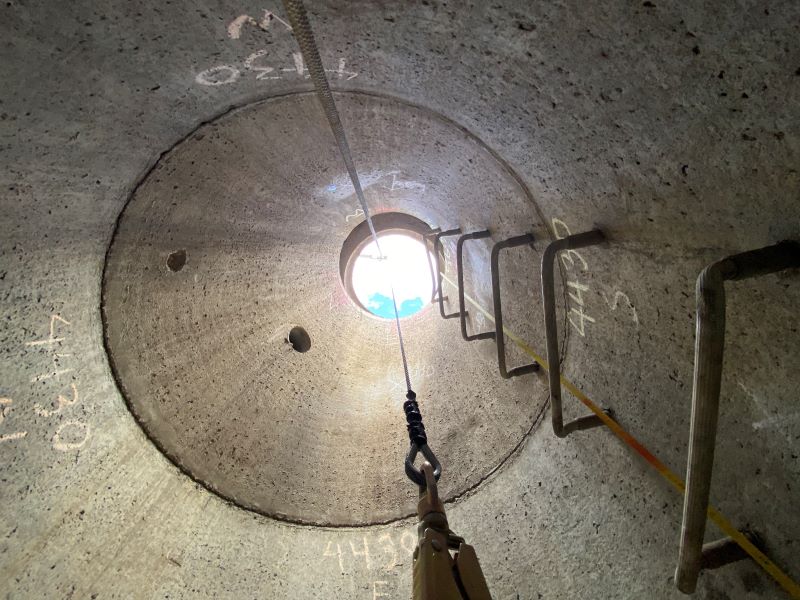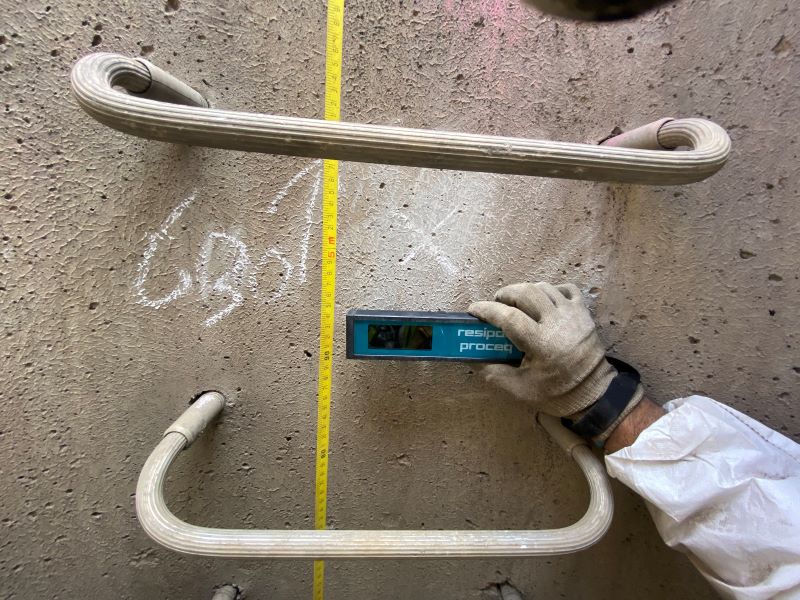Scope
FPrimeC was hired by the client to conduct a digital Inspection and Assessment of the Maintenance Hole and Valve Chamber using non-destructive testing and evaluation methods. The maintenance hole was made of precast concrete elements with an overall depth of 8 m.
The existing manhole and the valve chamber were located at a construction site (LRT development in Ottawa), and the client was interested to assess their reliability and integrity to decide on keeping/replacing the structure.
Inspection and Assessment of Maintenance Hole
FPrimeC used a wide range of non-destructive testing and evaluation methods for structural assessment of the maintenance hole, the valve chamber, and assessing the durability performance of the precast concrete elements.
1- Digital Inspection of Maintenance Hole
360 Degree Video capture was used to review and document the current condition of the maintenance hole. The approach helps engineers perform the inspection in a much shorter period of time, with higher confidence and minimum risk to inspectors and engineers on site.
2- Ground Penetrating Radar – GPR
GPR was used to verify the existing reinforcement of the precast maintenance hole segments as well as the valve chamber walls and transition slab.
3- Ultrasonic Pulse Testing
Ultrasonic Pulse Testing was performed in an in-direct configuration to evaluate the structural integrity of concrete in the maintenance hole and the valve chamber elements. The test was used to assess concrete quality, uniformity, and integrity on a comparative basis.

4- Surface Electrical Resistivity
Surface Electrical Resistivity was used to evaluate the durability performance of concrete at different locations in the maintenance hole segments, the transition slab, and the walls of the valve chamber. The Resistivity of concrete was then used to evaluate the durability of concrete, and assess its resistance against the ingress of aggressive agents, such as chloride.

